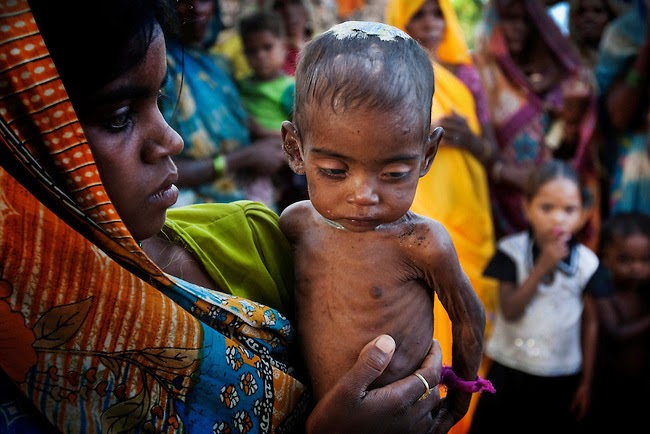Reuters photo
By
Siddhartha Rastogi
3 Evils which can push the economy on a downward spiral
Shanta Kumari, mother of a two year old daughter, is eight months pregnant. Since her pregnancy, she has only put on three kgs of weight. Her husband, an agriculture labourer in the rural land of Bihar, wants a son this time to take care of him in his old age. This is her third pregnancy in the last four years. Their first child was stillborn. Lack of nutrition for the mother and child reduces the chances of infant mortality rate significantly, leaving only hope and prayers to the almighty for the child to come out healthy and survive for the next five years. Shanta knows that during the period of pregnancy she needs to have fortified and nutritious food so that the baby can get adequate nutrition. But lack of family support and lack of money has only added to her woes.
Her daughter is less than 10kgs. Post her second delivery, Shanta could only feed her daughter for 3 months as breast milk stopped coming, signifying a lack of intake of proper food and nutrition during the nursing period. Shanta’s husband has cleared his senior secondary exam but has no job. To protect the family for starvation, he took up manual labour. He remains unemployed almost three to four months every year.
The story of malnutrition to undernutrition to unemployment to women suppression is common. Data from Registrar General of India’s office for Year 2014 (latest available) shows:
“India has higher infant mortality than its neighbours Nepal & Bangladesh,
both poorer countries.”
The situation is even worse in rural India, where basic medical and healthcare services cease to exist and along with it comes the draconian regime of perilous poverty.
India accounts for roughly 17.5% of the total world population but 25% of the total maternal conditions/ illnesses and 20% of nutritional disorders.
The surprising part is despite the fertility rate almost halving since independence, which currently stands at 2.5, the government has not been able to contain infant mortality. Successive governments’ apathy (allocating only meager 1% of the total GDP towards basic healthcare) has led to marginal improvement in primary healthcare at the grass roots level.
To make matters worse, children who survive for 5 years and add to the labour force of the country, are totally incapable of handling smart jobs, which the changing world needs, driven by intelligence and technology. This is mainly on account of a lack of nutrition at an early age. Lack of basic nutrients pose impediments in developing healthy brains and healthy bodies of adults accompanied by various illnesses which make his or her earning capacity lower.
Latest employment statistics shows that almost
10 million people add to the work force but
less than half a million find jobs in organized sector.
Amidst all this mess, Nidan, a NGO based in Bihar has come up with innovative thinking. They have implemented Food nutrients fortified plants, with the help of Gain in three rural centers of Bihar. The rationale is fairly clear, solving three problems with a single exercise.
These fortified plants are run collectively by the association of women, thereby adding supplementary income to the household. It also enables women empowerment as women of the family learn to deal with the worldly matters generally driven by men.
Since the set up is run and controlled by females, they empathize well with other women, who need prenatal and neonatal nutrition. These women by creating self help groups add to the GPD and reduce the burden on employment exchanges, thereby providing employment opportunities to self and others.
Three villages have already displayed the success of the Project. Perhaps with some assistance from the government and some from the social venture funds, the model can be implemented in all six and a half lac villages of India thereby bringing the true meaning of democracy where men and women are both treated equally with equal opportunities to achieve success.



No Comments Yet!
You can be first to comment this post!